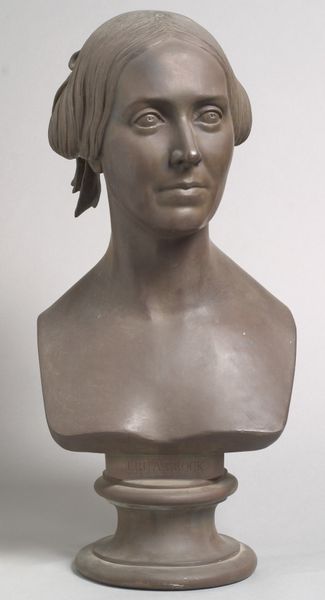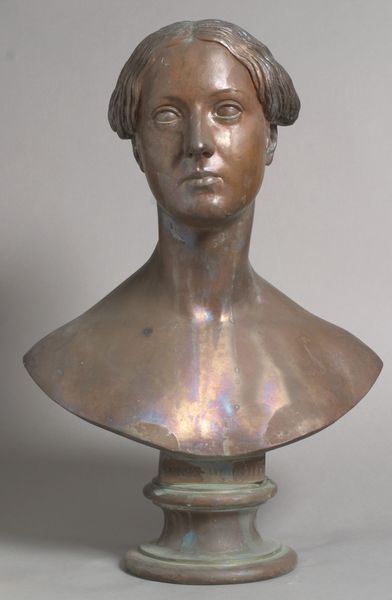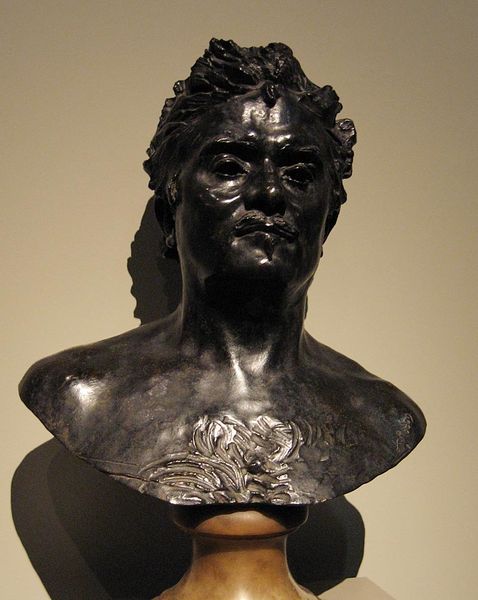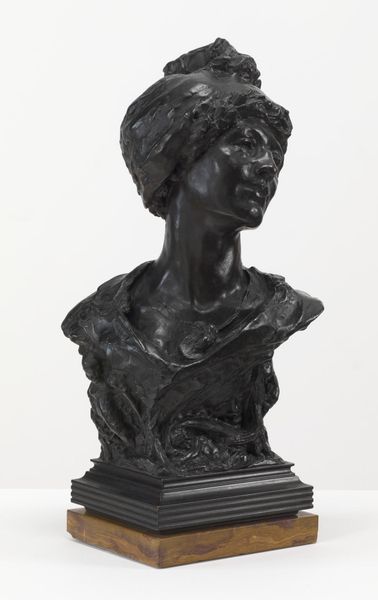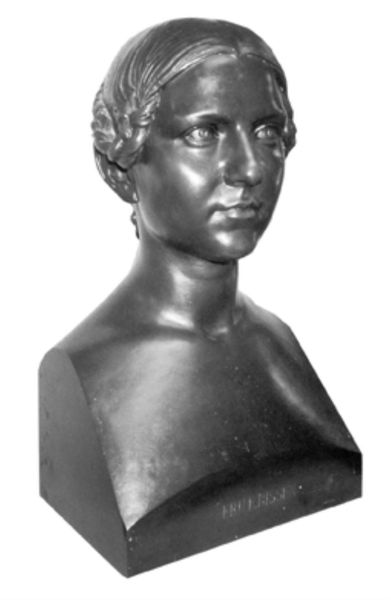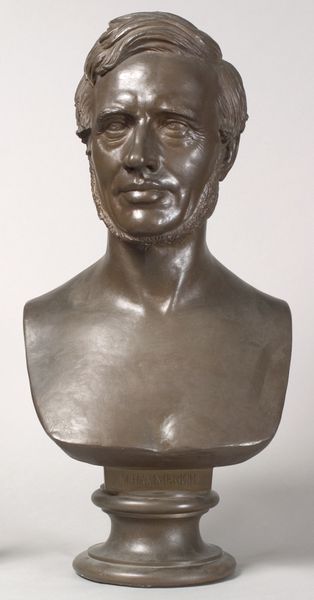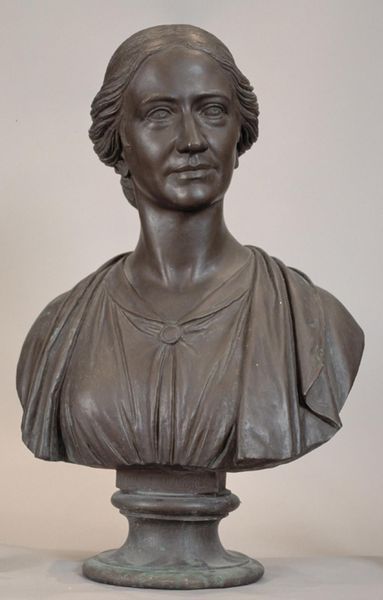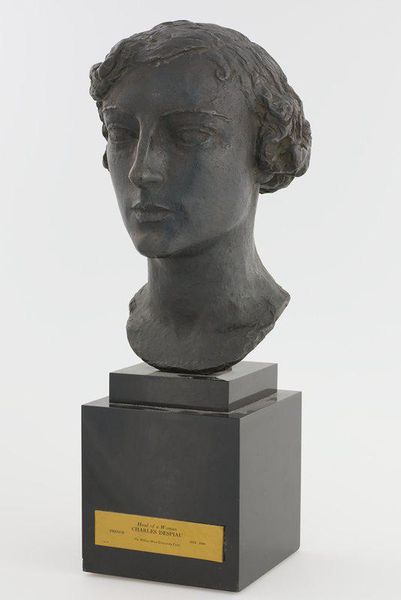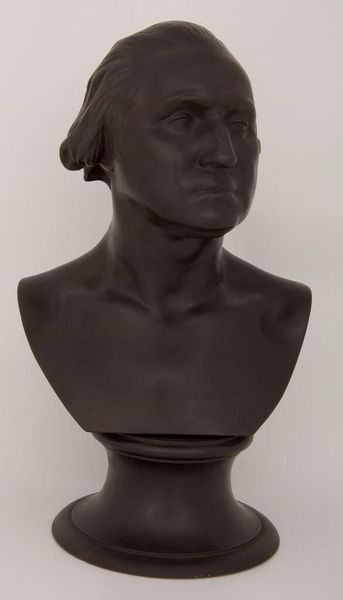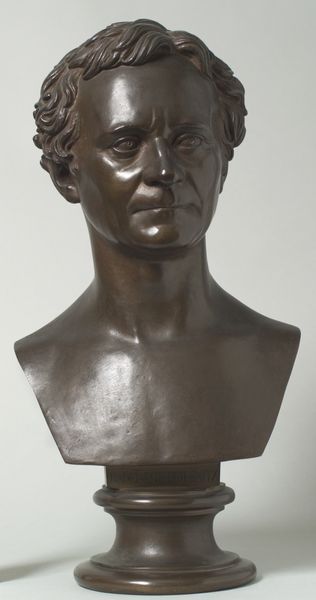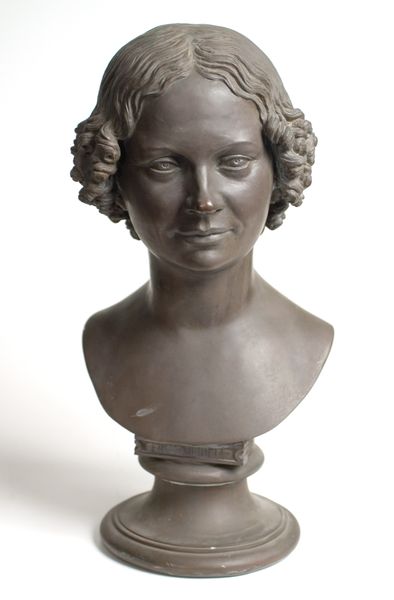
Dimensions: object: 419 x 394 x 229 mm
Copyright: © The estate of Sir Jacob Epstein | CC-BY-NC-ND 4.0 DEED, Photo: Tate
Editor: Here we have Sir Jacob Epstein's bronze bust, Mrs Mary McEvoy. The material and the way it's worked feel so integral to the overall effect. What can you tell me about the process and context of this sculpture? Curator: Consider the labor embedded within this bronze. Epstein likely employed assistants for the casting, an industrial process transforming raw materials. How does the inherent value and cultural associations of bronze impact the viewer's perception of Mrs. McEvoy? Editor: So, the bronze itself elevates the subject beyond just a likeness. Curator: Precisely. It engages with ideas of permanence, status, and the artist's choice of materials, reflecting both societal values and the artist's intent to create something lasting. Does understanding this alter your initial perception? Editor: It certainly gives me a deeper appreciation for the choices made.
Comments
tate 6 months ago
⋮
http://www.tate.org.uk/art/artworks/epstein-mrs-mary-mcevoy-n06139
Join the conversation
Join millions of artists and users on Artera today and experience the ultimate creative platform.
tate 6 months ago
⋮
Mary McEvoy (1871-1941) trained at the Slade School of Art, London, and is represented in the Tate Gallery's collection by a painting of a woman reading. She married the painter Ambrose McEvoy in 1902. She sat to Epstein for this portrait bust in 1909, and her family recall that it was modelled by candlelight as the electricity had been cut off. After the experience of modelling from Mary McEvoy using clay, Epstein decided to carve a bust of the same sitter in marble. This was bought by Johannesburg Art Gallery in 1910. Both the bronze and the marble busts capture the gentle strength of the sitter. Gallery label, September 2004

